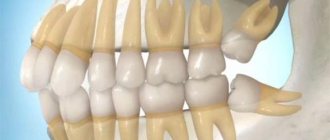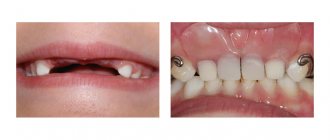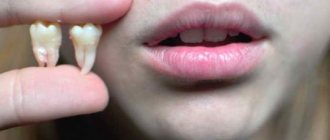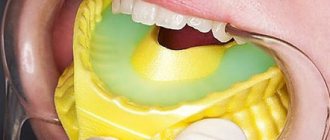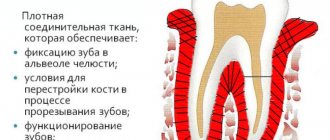Strong tooth enamel is not only the key to an attractive appearance, but also an indicator of health. Dental tissue requires careful care in order not to undergo premature destruction. For this reason, daily oral hygiene is an integral part of every person’s life.
Sometimes the surface of elements undergoes negative changes under the influence of various internal or external factors. In this case, you can cope with the problem both at home and in the doctor’s office. The article will discuss the main methods of strengthening tooth enamel, which are most popular among patients in dental clinics.
Structure and structure
The main function of the dentition is to grind and grind consumed food, which is subsequently better absorbed by the digestive tract. Let us consider in more detail the structure of the elements, which includes the crown, root parts of the elements and their neck.
The crown is the visible part of the teeth located on the surface of the gums. It is she who takes an active part in grinding food. The neck represents a kind of transition between the visible and hidden parts of the elements and is located under the gum.
The root is located below the gum line and is responsible for anchoring the tooth in the alveolar processes of the jaw. The upper part of the structure in question consists of mixtures of calcium and collagen, which are called dental cement.
The bone tissue of the elements consists of 3 main layers: pulp, dentin and enamel. The pulp is a soft tissue penetrated by nerve fibers and a network of blood vessels. Dentin is stronger than pulp and is similar in structure to bone tissue in other parts of the human body. Enamel is the hardest part of the tooth, which performs a protective function. It prevents premature destruction of dentin and damage to the pulp by pathogenic microorganisms. Due to the hardness of the enamel, a person can bite off food and grind it.
The dentition is also responsible for the normal formation of speech and the formation of sounds. The bite affects the shape of the jaw and face. If there are obvious deviations in the structure of the teeth, this is reflected in the proportions of the face.
About bone tissue
Its structure is represented by two types of cells and the space between them filled with a compact substance:
- osteoblasts - work on tissue restoration, creation of collagen and calcium salt compounds;
- osteoclasts are destructive cells that, due to enzymes in their composition, can reduce the amount of collagen;
- the substance itself is represented mostly by hydroxyapatites, that is, salts of calcium and phosphoric acid.
During a normal life cycle, all these cells work tirelessly. Due to their regenerating and destructive functions, bone tissue has the ability to be completely renewed, but this happens quite slowly. It is believed that in general, bone changes over 10 years in young and healthy people.
We suggest you read: After tooth extraction, medicine was placed in the socket - ProfiMed
And only with age the action of destructive cells begins to prevail over regenerating ones. Therefore, atrophy of the bone tissue of teeth after 35-40 years is a common occurrence. This is also facilitated by a deficiency of certain minerals in human nutrition, health problems and metabolic disorders.
Reasons for abrasion
Changes in the structure of enamel and its quality occur under the influence of various factors. Among the main ones it should be noted:
- Uneven distribution of chewing load on the jaw. Pathology occurs as a result of multiple or single loss of elements in a row.
- Bruxism is a disease associated with involuntary grinding of teeth. Most often, its signs are noted at night, when a person cannot control his consciousness.
- Work in environmentally unfavorable conditions. Constantly inhaling toxic fumes or chemical compounds has a bad effect not only on the skin, but also on hard tissues in the human body.
- Insufficient enamel strength. It appears in some dental diseases and in the absence of microelements in the body.
- Systemic disorders associated with dysfunction of the thyroid gland and metabolic processes.
- Bite abnormalities. In pathology, there is an incorrect closure of some elements of the row, which causes peeling of the cutting edge of the incisors or fangs.
- Poor nutrition. The problem associated with the destruction of enamel is facilitated by the abuse of carbonated drinks, sweets, and fast food products.
- Smoking and drinking alcohol. Chemicals in products negatively affect the microflora of the oral cavity. This leads to the fact that the mucous membranes become unable to resist the proliferation of pathogenic flora.
- Bad habits: biting nails, cleaning teeth with toothpicks. As a result of such actions, microcracks and chips form on the enamel, into which pathogenic microorganisms enter.
- The use of certain groups of medications that negatively affect the functioning of the oral mucosa: sedatives, antibiotics, sedatives.
Why does bone atrophy occur?
Doctors identify the following factors that influence her condition and lead to bone loss even at a young age:
- Tooth loss can become not only the cause of atrophy, but also its consequence, the main symptom. If a unit is removed, then “neighbors” quickly try to take its place. As a result, the pressure on the alveolar process changes and bone cells more actively destroy tissue. And a weakened and reduced bone is unable to hold even a healthy unit in the socket.
- Age-related features – leading to jaw shrinkage due to active tooth loss, changes in pressure on the bone, lack of blood supply and reduced metabolism.
- Acute or chronic diseases of internal systems - the function of the thyroid and parathyroid glands is of particular importance, as well as ovarian dysfunction in female patients. Such health problems lead to a lack of hydroxyapatite, and this, in turn, affects bone strength. To restore the normal functioning of the jaw, it is necessary to achieve a predominance of regenerative processes in bone tissue over destructive ones, which is practically impossible.
- Any inflammatory diseases occurring in the jaw area. They gradually affect the tissue and its cells and lead to irreversible consequences.
- Dentures – especially if they are not fitted correctly. Many doctors have noticed that some orthodontic structures do not have the desired effect on the gums. In the case when a person refused to undergo implantation and agreed to a removable denture, this will soon lead to atrophy of the jaw bone tissue.
- Injuries also lead to disruption of bone integrity and contribute to faster bone loss.
- The presence of a tumor in the surrounding area or pathological changes in the neighboring facial bones accelerates the work of osteoclasts, which affects tissue loss.
- Some anatomical features and congenital pathologies are considered primary and do not depend on a person’s way of life.
We invite you to familiarize yourself with ULTRACAINE D-S 0.04 0.000005/ML 2ML N10 AMP RR
Recovery methods
There are many effective ways to remineralize enamel. The method of dental restoration largely depends on the stage of the problem and the individual characteristics of each patient. Medicines and traditional medicine are used only after consulting a doctor in order not to aggravate the situation.
Medication
The results of medications will only be achieved if they are used regularly. Usually, means for strengthening tooth enamel are prescribed in courses with minor breaks. Such methods of dealing with the problem are possible only in the initial stages of demineralization, otherwise professional help will be needed.
Consider a list of popular pastes intended for regeneration of bone structures at home:
- President Unique with lactate, pantothenate and glycerophosphate. The drug is used 2 times a day for 1 month.
- President Classic with sodium fluoride. The paste saturates the enamel and creates a protective film on its surface for 12 hours.
- Splat Biocalcium. The drug is necessary to reduce the severity of defects in the enamel by filling its micropores. Use the drug twice a day for 2–4 weeks.
- Colgate Sensitive Pro-Relief with calcium. The gel saturates the enamel with microelements and reduces its sensitivity 1 minute after hygiene measures. Use the product in courses, but not more than once a day.
- Rocks Caribbean Summer. The paste is enriched with mineral elements, xylitol and bromelain. It is suitable for daily use.
- Silca Herbal Complete is a complex action paste. Improves blood circulation in the gums, so the teeth are better supplied with nutrients.
Remineralizing pastes will give the best treatment results if they are combined with special enamel restoration products available in pharmacies without a doctor’s prescription. Such drugs can cope with incipient tooth decay worse than professional formulations.
Which drug is better to use? The list of products recommended for strengthening enamel includes:
- ROCS Medical Minerals. The drug contains magnesium, phosphorus, xylitol and calcium. The product restores enamel when caries reaches the spot stage. Before spreading the gel, it is recommended to hold it on your teeth for some time. The cost of the product is 370 rubles.
- Elmex Gelee. Suitable for enamel remineralization, tartar removal and professional teeth cleaning. Copes with carious lesions at the spot stage. It is recommended to use the gel no more than once a week. The average price is 250 rubles.
- Also, if the enamel is damaged, experts recommend giving preference to brushes with soft bristles, since coarse fibers stimulate microcracks to increase in size. After fixing the problem, it is better to use a hard bristled product or an electric brush (ideally). After hygiene procedures, you need to massage your gums for 2-3 minutes with light circular movements. Manipulations improve blood circulation in the gums and contribute to a better supply of dental tissues with microelements.
People's
What to do if the outer part of the crown is worn out. You can also strengthen your teeth using alternative medicine:
Vitamins for teeth and gums
- Activated carbon. The drug whitens enamel without harming bone tissue. Before use, several charcoal tablets are ground into powder and gently rubbed into the teeth. The duration of the procedure is 4 minutes. After this, the mouth is rinsed well with water. It is recommended to perform manipulations no more than 2 times a week.
- Sea salt. Saturates the enamel with fluoride and other useful microelements, clogs microcracks. To prepare the product you will need 100 ml of water and 4 tsp. sea salt. Rinse your mouth with the resulting solution in the morning for 30 days.
- Alcohol tincture of propolis and calamus. The products fight caries processes and stop the destruction of dentin. The tinctures are mixed in a 2:1 ratio (calamus and propolis, respectively) and diluted with 2 tbsp. l. water. Rinse your mouth with the solution once a day for 2 weeks.
- Herbal decoction based on cloves, cinnamon, fennel and mint. The composition stimulates regenerative processes in dental tissue. To prepare the product, plant ingredients are taken in equal proportions (1 tsp each), crushed and added to a toothpaste.
Traditional medicine can be used only in cases of slight destruction of enamel and in mild stages of caries. Otherwise, the method will not give the desired result.
Professional
If there is significant tooth damage accompanied by intense pain, professional help will be required. Modern dental methods make it possible to perform both superficial and deep restoration of enamel.
Fluoridation
The purpose of the procedure is to saturate the teeth with useful microelements and seal the dentinal tubules of the tooth. This frame protects the bone tissue from further destruction. With the help of deep fluoridation, you can solve a whole range of dental problems:
- level the enamel surface;
- fill microcracks in teeth;
- reduce the likelihood of erasure.
For restoration, the drug Ftorlak is usually used.
The dentist distributes the product over the surface of the teeth, trying not to affect the soft tissues of the mouth. Fluoride varnish creates a protective film on the elements for a long time. The average cost of a dental service is 1,200 rubles. The method is used only for mild defects.
Remineralization
The procedure involves saturating bone tissue with preparations based on calcium and fluoride. Each of these components, when interacting, has a more pronounced therapeutic effect.
Indications for the recovery procedure:
- increased sensitivity of teeth;
- enamel abrasion;
- voids in bone tissue.
The cost of one remineralization procedure is 100 rubles. The number of procedures depends on the depth of damage to the elements and their ability to regenerate.
Regeneration
Unfortunately, the enamel coating is designed in such a way that it cannot be restored naturally. But today there are ways to strengthen it, which in turn helps to increase resistance to external influences.
For example, if there is serious destruction, then calcium phosphate, which is in an amorphous state, is used in dentistry. This composition is applied to the tooth surface, where a chemical reaction begins to occur, namely the conversion of calcium phosphate into apatite (natural enamel apatite).
Thanks to this method, you can not only remove defects, but eliminate the increased sensitivity of the diseased tooth. In addition, this procedure allows you to give an aesthetic appearance.
Strengthening teeth in children
The doctor decides whether to remineralize a child’s teeth or not. Most often, children are prescribed fluoridation. Fluorine is necessary for the proper formation and growth of elements in childhood. The purpose of the procedure is to reduce the solubility of enamel and restore the top layer of teeth.
The fluoridation procedure for children can be performed in several ways:
- Coating of teeth with fluoride-containing preparations. Before the manipulations, the dentist removes plaque and dries the elements with a halogen lamp. To increase the effectiveness of fluoridation, it is recommended to carry out the procedure immediately after the appearance of milk teeth on the surface. The frequency of the procedure is once every 6 months.
- Using cap. The devices are filled with fluoride-containing preparations and applied to the row elements for 15 minutes. To strengthen the enamel, at least 10 sessions of the procedure are required.
Nutrition plays an important role in improving enamel in children. In order for bone tissue to receive the necessary microelements from orgasm, you need to include the following foods in your diet:
- broccoli;
- fermented milk drinks;
- rice;
- seafood;
- fish;
- vegetables and fruits with high fiber content;
- clean water;
- green tea.
Causes
To fix the problem, you need to understand its origin. A common cause of such pathologies is tooth loss. “Neighbors” begin to move to the site of the hollow gum, deforming the jaw and causing a large number of problems:
- speech defects;
- disturbances in the gastrointestinal tract;
- tooth displacement;
- appearance deteriorates;
- violation of occlusion;
- periodontitis;
- Over time, the bone tissue may become so deformed that subsequent prosthetics will be impossible.
If you want to stop the loss of jaw bone tissue, you should not hesitate to install dentures. Already three months after tooth extraction, atrophy begins to develop due to the displacement of the dentition.
There are several common causes of this disease:
- injuries;
- tumors;
- general diseases;
- inflammatory processes;
- anatomical features;
- congenital anomalies;
- natural changes that occur with age.
All processes occurring in the body are interconnected, so tooth loss always leads to serious disruptions in the functioning of the body. However, visually atrophy begins to be noticeable only in advanced stages.
For example, if most of the teeth are missing: the cheeks begin to sink, the corners of the lips droop, and asymmetry appears. But the worst thing is not the aesthetics, but the reduction in the size of the bone tissue. Because of this, the implantation process becomes impossible.
We suggest you read: How long after tooth extraction can dentures be installed?
The root of the implant simply will not attach to a bone that is too narrow.
Prevention
To maintain the integrity of your tooth enamel, you need to see a dentist every 6 months. This rule will help to avoid complications associated with demineralization of elements. Also, you should not ignore the rules of personal hygiene, since the health of the oral cavity depends on the timeliness of hygiene procedures. Persons prone to abrasion and destruction of enamel are advised to exclude or minimize the consumption of solid and rough foods (nuts, crackers), sour berries and fruits, and alcohol. This will prevent accidental damage to the elements. During the off-season, it is necessary to enrich the body with vitamins and minerals.
Enamel composition
- Minerals (up to 95%);
- organic matter (1.2%);
- water (3.8%).
Depending on the thickness, the enamel changes color - from white to yellow. In the thinnest places where the dentin is visible, the tooth looks yellowed. The degree of mineralization affects the transparency of the tissue. The more minerals in the composition, the more transparent the surface will be. For this reason, baby teeth, which are less saturated with minerals than molars, look whiter.
- Enamel is a tissue that is not capable of regeneration, since it does not contain cells.
- It constantly metabolizes ions coming from saliva, dentin and pulp.
- The tissue is characterized by mutual permeability, with the least permeability characteristic of the external surfaces adjacent to the oral cavity.


